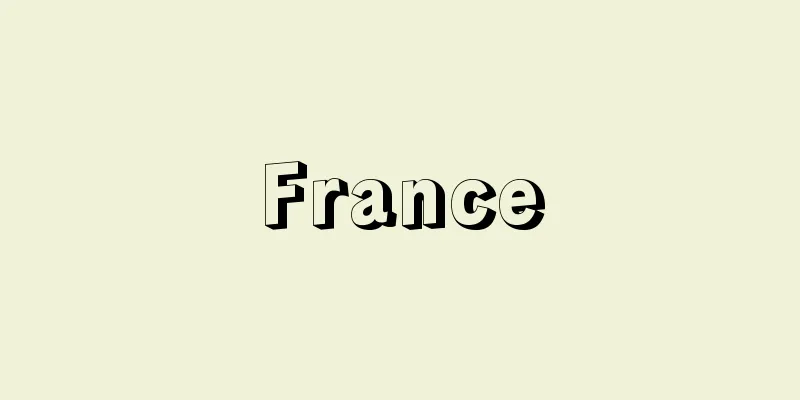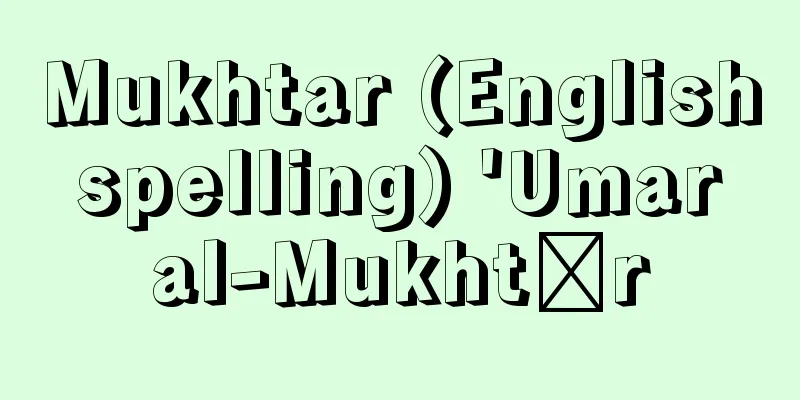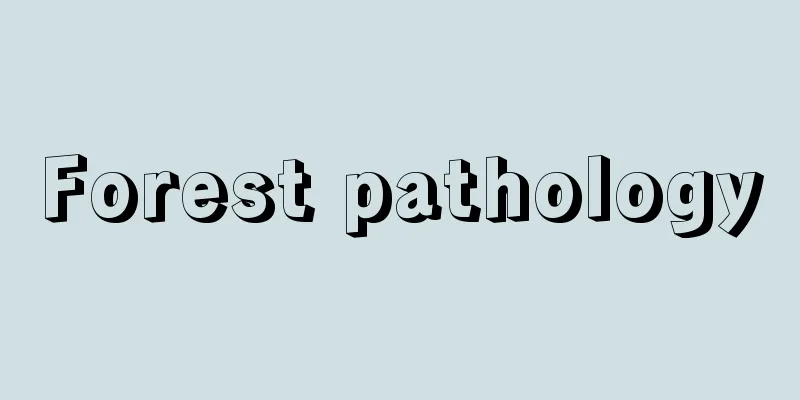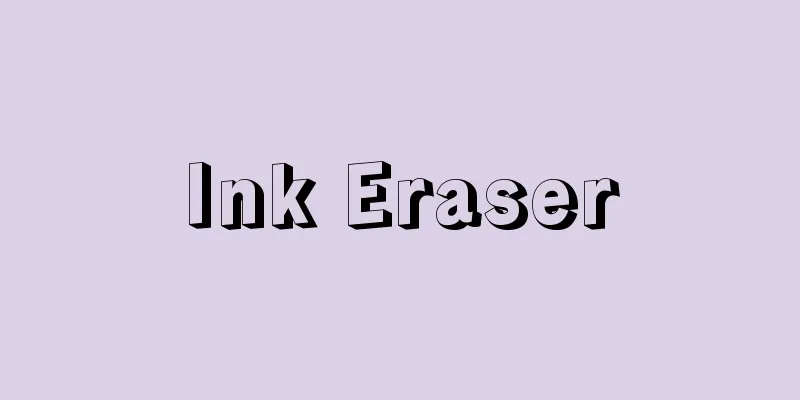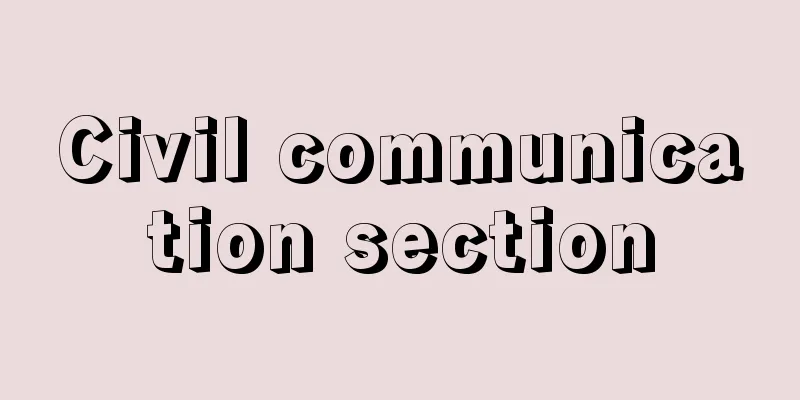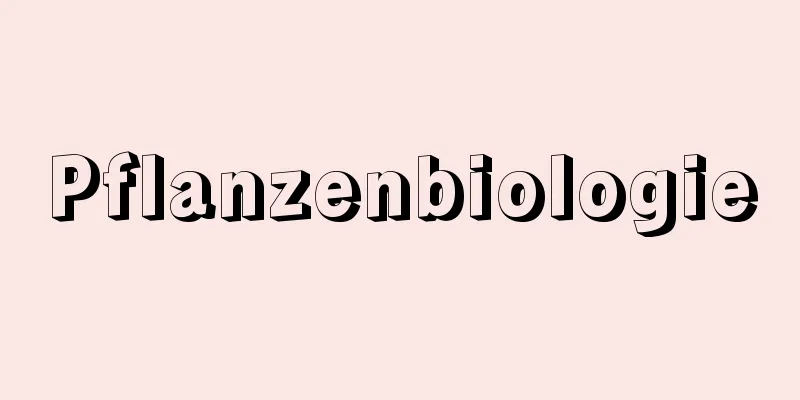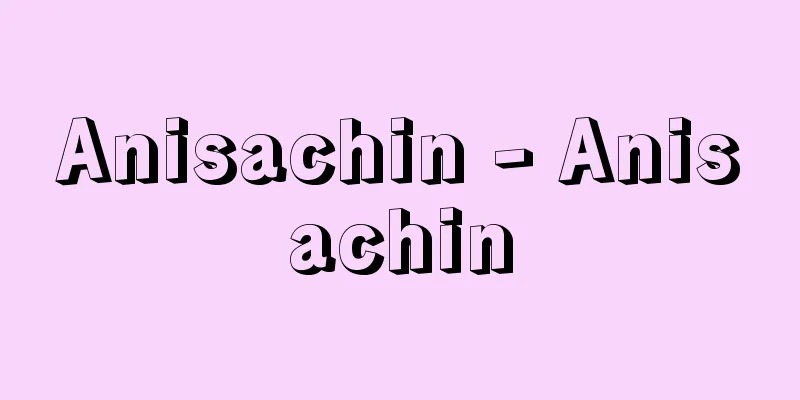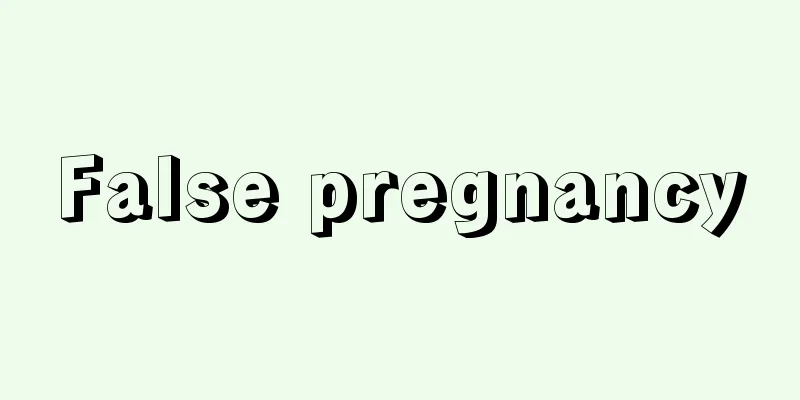Folk medicine - Minkanryoho (English spelling) Folk medicine

|
It can be said that it includes all medical activities other than orthodox medicine (performed by specialists with certain qualifications) that are socially recognized among various medical activities. However, it is difficult to draw a general and clear boundary between the two. The representative of officially recognized medicine is modern medicine, which is called scientific medicine or biomedicine, but in some countries, "traditional medicine" such as Chinese medicine (traditional herbal medicine) and Indian medicine (Ayurveda), which have been built up over a long historical period, are also officially recognized. Relatively new therapies such as chiropractic (spinal correction therapy) have also been given a certain degree of officially recognized status in the United States. In addition, in some African countries, witch doctors who practice magical treatments are officially recognized to practice in modern medical hospitals. Therefore, it is very difficult to set general standards for folk medicine from the perspective of social recognition. For the same reason, it is also difficult to set standards based on whether the healer is socially recognized or not. This is because medical practices that are considered folk medicine in one society may be officially recognized in another society. Thus, the standard for orthodox medicine is one that asserts the scientific nature of the knowledge and theories on which it is based and their application. Ackerknecht's claim that so-called "primitive medicine" is "fundamentally magical and religious, with little use of rational elements" is also an assertion of this position. From this perspective, all medical treatments other than modern medicine are unorthodox folk remedies, but this view is generally considered to be the most accepted. This is well illustrated by the fact that the "restoration of traditional Chinese medicine" in Japan could only be achieved through a scientific reevaluation of traditional Chinese medicine. However, on the other hand, it should be noted that many of the instructions given by doctors, such as whether or not to take a bath after illness, are based on empirical rather than scientific evidence. In some countries, "traditional medicine" is recognized as an important alternative medical system, combining a consistent theoretical system, a treatment system cultivated through experience, and a system for training healers. However, its theoretical system has not been scientifically verified, but is rather metaphysical, and not all of its treatment methods are scientifically sound. In these respects, "traditional medicine" differs from both scientific medicine and folk medicine. [Hideo Takei] Empirical rationality and magicEven if folk remedies are considered to have no scientific backing, their effectiveness is not entirely denied. Folk remedies are often thought of as consisting of empirical and rational elements such as herbs, poultices, hot and cold baths, massages, and splinting, and magical elements such as talismans, prayers, and exorcisms. It is well known that the former type of remedies, which are backed by long experience, can be effective even if there is no scientific explanation for them. As an important historical and cultural heritage, it is expected that their records and effectiveness will be scientifically elucidated. Foster, based on his analysis of various ethnomedicines, proposes a system of personalistic medicine, which seeks to attribute the cause of illness to the work of gods, ancestors, evil spirits, and humans (divine punishment, curses, possession, witchcraft, sorcery, etc.), and a system of naturalistic medicine, which seeks to attribute the cause of illness to impersonal factors (yin and yang, elements, bodily fluids, cold and heat, etc.). The former corresponds to the magical element of folk medicine, and the latter to its empirical and rational element. Modern scientific medicine can be said to be a special type of naturalistic system. Folk medicine is often considered to be a superstition due to its magical elements. However, when the cause of an illness is attributed to magic, it is important to note that through magic, as in the case of the Azande ethnic group in Africa, the reasons why a particular person became ill at a particular time are considered (even if they are not the only reasons). Apart from congenital diseases, whether a person becomes ill is generally considered to be determined by the interaction between host factors (sex, age, physical strength, constitution, nutrition, lifestyle, presence or absence of social and psychological stress, etc.) and pathogenic factors (pathogenic microorganisms, carcinogens, poisons, radiation, other natural environmental factors, etc.). These factors can also be divided into social and cultural factors and natural biological factors. In comparison, while medicine as a science has developed with a focus on natural biological factors, especially pathogenic factors, magical medicine can be seen as having developed with a focus on host factors, especially social and cultural factors. The importance of social and cultural factors in illness is being recognized again in modern medicine, and in this sense, it seems likely that there will be quite a few things that scientific medicine has to learn from magical medicine as a system. [Hideo Takei] Folk remedies, health trend, and new religionsOne aspect of folk medicine is that it reflects social needs regarding illness and health that are difficult to solve through orthodox medicine. The recent boom in folk medicine, health methods, and natural foods, which stem from fears of cancer and other lifestyle-related diseases (adult diseases) and the desire for youth and better health, as well as the rise of new religions that consider healing an important element of their activities, can be understood in this light. In this respect, research into folk medicine is important in more ways than simply recording historical and cultural heritage. In the field of folk medicine, there are people who are called experts in folk medicine, but one of the greatest features of folk medicine is that, unlike modern medicine, knowledge is not monopolized by experts alone, but is shared collectively in some form, although there are differences such as in societies where each member has a relatively homogeneous knowledge, or where each piece of knowledge is inherited secretly from others as personal property and is used through various forms of exchange when someone falls ill. When considering the social harm caused by the monopoly of knowledge, the nature of folk medical knowledge may provide a useful suggestion. [Hideo Takei] Japanese customsUntil the modern era, when Western medicine was adopted, folk remedies incorporating traditional Chinese medicine were practiced nationwide. As examples, let me introduce some of the treatments that appear in early modern documents. In Matsuya Hikki (1818-45) by Oyamada (Takada) Tomokiyo, it is written that young palm leaves burned black and used as a miracle cure for paralysis will bring about an immediate recovery. If young leaves are not available, it says that old leaves will suffice. The same book also says that the best cure for cuts is water and oil. Whatever the injury, applying water and oil will provide an immediate effect. It is even better if used warm. In Unpyo Zasshi (1842), said to have been written by Yanagisawa Kien, it is written that if you burn cycad leaves, soak them in sesame oil, and store them, they will miraculously heal any wound or cut, no matter how severe, without washing it with sake. It is said that this was the family technique of Kusunoki Masashige. He writes that a friend of his who was cut by someone sustained a wound four inches deep, and that this method quickly cured him. Tsumura Soan's Tankai (1795) also states that applying loofah water to eye diseases and salted carp are good for night blindness. Similar folk remedies are still used today. Common household remedies include making eggnog when you have a cold, or roasting pickled plums and drinking them in boiled water before going to bed. It was also common to hear people treat open wounds by putting grass on the sleeve of their shirt. A somewhat unusual treatment is said to be found in Odaka district of Minamisoma city, Fukushima prefecture, and elsewhere: if you can't stop having hiccups, fill a rice bowl with water, place chopsticks crosswise over it and drink water from all four corners, which is said to cure the hiccups. It is interesting to note that this method is also used in the faraway Yanbaru region of Okinawa's main island when a fish bone gets stuck in your throat. The above treatments involve heat, cold and stimulation, and can be considered physical therapies. Other methods that have been practiced since ancient times include acupuncture, moxibustion and hot spring therapy. Some treatments are faith-based, relying on gods and Buddhas. In Iwate Prefecture and other areas, people pray to Hakusan Shrine when they have a toothache. In the past, 100 pieces of hemp stalks or Japanese kaya were offered, but nowadays this has been replaced by ready-made disposable chopsticks. There are also Jizo for warts, grass jizo, angry jizo and measles, and people pray to these Jizo when they are sick with warts, grass sores, malaria and measles, respectively. There are also what might be called prayers for the power of God. That is, when there is a seriously ill person in a village, a large group of people will go out to every household in the village, one at a time, and pray to the gods and Buddhas; this is called sengori or seigitou. The belief was that the combined strength of many people would be all the more effective. Another faith-based form of therapy seen all over the country is drinking sacred water. It is believed that water that has accumulated in the hollows of certain stones or caves in old trees within the grounds of shrines can be cured by applying it to ailments such as the eyes, or by drinking it. Next, there are also magical therapies that do not go as far as formal medical treatments, but instead involve incantations. For example, one treatment for eye styes involves rubbing a comb on a tatami mat and placing it on the eye. There are also examples of spells being chanted. When the numbness subsides, one might chant "Numb, numb, go up to Kyoto" or "Cross the bridge." There are also spells that were used to prevent illness. Mulberry leaves and fruit are said to be a medicine for strokes, and it is said that if you regularly use a teacup made from mulberry wood, you will not get strokes, and that to avoid motion sickness, you should place a pickled plum or peppercorns on your belly button. Finally, there is the so-called drug therapy using herbs, roots, and bark. Some of the most widely used herbs include Geranium Herb, Houttuynia Cordata, Swertia japonica, and Saxifrage, which are used as folk medicines and have been recognized for their medicinal properties. [Oto Tokihiko] [Reference] |Source: Shogakukan Encyclopedia Nipponica About Encyclopedia Nipponica Information | Legend |
|
さまざまな医療的活動のうち、社会的に公認された正統医学(一定の資格を与えられた専門家によって行われる)以外の医療活動のすべてを含むものといってよい。しかし、両者の内容に一般的で明確な境界線を引くことはむずかしい。公認された医学の代表は科学的医学あるいは生物医学とよばれる現代医学であるが、歴史的に長い経験のうえに築き上げられた中国医学(漢方)、インド医学(アーユルベーダ)などの「伝統医学」も、国によっては公認されている。カイロプラクティック(脊柱矯正療法)などの比較的に新しい療法もアメリカでは一定の公認の地位を与えられている。また、アフリカのいくつかの国では、呪術(じゅじゅつ)的治療を行う呪医が現代医学の病院で治療活動を行うことを公認している。そのため、社会的認知という側面から民間療法に一般的基準を設定することは非常にむずかしい。同様の理由で、治療者が社会的に公認されているか否かで基準を設定することも困難である。ある社会では民間療法とみなされる医療行為が、別の社会では公認のものとなりうるからである。そこで、正統医学の基準として出てくるのが、それが基づいている知識・理論とその適用における科学性を主張する立場である。アッカークネヒトAckerknechtがいわゆる「未開医学」の特徴を「根本的に呪術的・宗教的であり、合理的要素の利用はわずかである」といっているのは、この立場の主張でもある。この立場からすれば、現代医学を除くすべての医療は非正統的な民間療法ということになるが、一般的にはこの考え方がもっとも受け入れられていると思われる。わが国における「漢方の復権」が、漢方の科学的再評価を通じてしかなされえなかったのは、このことをよく示している。しかしこれとは逆に、医師の指示のなかにも、たとえば病後の入浴の可否などのように、科学的根拠よりはむしろ経験的根拠に基づくものが少なくないことにも留意すべきである。「伝統医学」が一貫した理論体系、経験に培われた治療体系、治療者養成制度を兼ね備え、重要な代替医療体系として認められている国もある。しかし、その理論体系は科学的検証を経たものではなく、むしろ形而上(けいじじょう)学的であり、治療法も科学的に妥当なものばかりではない。「伝統医学」はこうした点で科学的医学とも民間療法とも異なる面がある。 [武井秀夫] 経験合理性と呪術性民間療法を科学的裏づけをもたないものとみるにしても、それらの有効性がすべて否定されるわけではない。民間療法を構成するものとして、薬草、湿布、温・冷浴、マッサージ、副木法などの経験合理的な要素と、護符、祈祷(きとう)、悪魔払いなどの呪術的要素とを分けて考えることが多いが、長い経験に裏打ちされた、前者に分類されるさまざまな療法が、科学的説明はまだない場合でも、有効性をもちうることはよく知られており、一つの重要な歴史的文化的遺産としてその記録と有効性の科学的解明が期待されている。フォスターFosterはさまざまな民族医学の分析から、人格主義的医学体系――病気の原因を神、祖霊、悪霊、人間などのしわざ(神罰、祟(たた)り、憑依(ひょうい)、妖術(ようじゅつ)、邪術など)に求める体系――と、自然主義的医学体系――病気の原因を非人格的な要因(陰陽、元素、体液、冷熱など)の平衡の乱れに求める体系――という考え方を提案している。前者は民間療法の呪術的要素に、後者はその経験合理的要素に対応するといえる。科学的現代医学は自然主義的体系の一特殊型ということができる。 民間療法はその呪術的要素のゆえに迷信に属するものとみなされることが少なくない。しかし、病気の原因が呪術に帰されるとき、アフリカの民族集団アザンデの例にみられるように、それを通じてなぜほかならぬその人が、ほかならぬそのときに病気になったのかということの原因が考えられている(それがすべてではない場合でも)ことに注意しておく必要がある。先天性疾患を別にすれば、一般に人が病気になるかどうかは宿主(しゅくしゅ)側の要因(性、年齢、体力、体質、栄養、生活習慣、社会的心理的ストレスの有無など)と病原的要因(病原微生物、発癌(はつがん)物質、毒物、放射線、その他の自然環境要因など)の間の相互作用から決まってくると考えられる。これらの要因は社会的文化的要因と自然的生物的要因とに分け直すこともできる。科学としての医学は自然的生物的要因、とくに病原的要因を研究の焦点として発達してきたが、それとの比較において、呪術的医学は宿主側の要因、とくに社会的文化的要因に焦点を置いて発達したものとみることができる。病気における社会的文化的要因の重要性は現代医学においても再認識されつつあるが、その意味では、科学的医学が体系としての呪術的医学に学ばねばならない点も少なからず出てくると思われる。 [武井秀夫] 民間療法・健康法ブーム・新興宗教民間療法は、正統医学によっては解決困難な病気と健康に関する社会的ニーズを反映するという一面もある。癌やほかの生活習慣病(成人病)などの病を恐れ、若さやよりよい健康を求める昨今の民間療法、健康法、自然食などのブームや、病気治しをその重要な要素とする新興宗教の隆盛はそうしたものとして理解できる。この点で、民間療法の研究は、単に歴史的文化的遺産の記録という以上の重要性をもつものである。 民間療法の領域でも民間療法の専門家と称される人は存在するが、民間療法の最大の特徴の一つは、現代医学とは異なり、その知識が専門家だけに独占されるのではなく、各成員が比較的に均質な知識をもつ社会や、一つ一つの知識が個人的財産として他人には秘密に相続され、病人が出るとさまざまな形の交換を通じてそれらの知識が利用される社会などの違いはあれ、知識がなんらかの形で集団的に共有されている点にある。知識の独占がもたらす社会的弊害について考えるとき、民間療法的な知識のあり方は一つの有効な示唆を与えるものとなるかもしれない。 [武井秀夫] 日本における習俗近代になって西洋医学が採用されるようになるまでは、もっぱら漢方医学を加味した民間療法が全国的に行われていた。例として、近世の文献にみえた治療法の若干を紹介しておきたい。小山田(おやまだ)(高田)与清(ともきよ)の『松屋筆記(まつのやひっき)』(1818~45)に、中風の妙薬としてシュロの若葉を黒焼きにして用いればすぐ平癒するとある。若葉がなければ古葉でも結構とある。また同書に、およそ切り傷の妙薬は水油にしくはない。いかなる手負いでも水油をつければ即効する。温めて用いればなおよいとある。柳沢淇園(きえん)の著と伝えられている『雲萍雑志(うんぴょうざっし)』(1842)に、ソテツの葉を黒焼きにしてゴマの油に浸し、蓄えておいたものは、金創(きんそう)切り傷にはいかほどのことにても酒にて洗わずに癒(い)ゆること妙である。楠木正成(くすのきまさしげ)の家法だ、とある。自分の友人で人に切られた者が深さ四寸の傷を負ったが、この法ですぐよくなったとある。津村淙庵(そうあん)の『譚海(たんかい)』(1795)にも、眼疾にはヘチマの水を塗るとか、鳥目(とりめ)にはコイの塩辛(しおから)がよいとか記されている。 これに類似した民間療法は、現代においても行われている。家庭内でよく行われているものに、風邪(かぜ)をひいたとき卵酒をつくるとか、寝る前に梅干しを黒焼きにして熱湯に入れて飲むなどがある。また生傷(なまきず)の手当てに袂(たもと)くそをつけるというのもよく聞かれたことである。やや奇抜な処置としては、福島県南相馬(みなみそうま)市小高(おだか)区をはじめ各地で、しゃっくりが止まらぬとき、茶碗(ちゃわん)に水を入れ、その上に箸(はし)を十字に渡して四隅から水を飲むと治るという。この方法が、遠く離れた沖縄本島の山原(やんばる)地方で、食べた魚の骨がのどにつかえたとき同様に行われているのはおもしろい。 以上のような治療法は、熱したり、冷やしたり、刺激したりするいわば物理的療法ともいうべき方法で、ほかに古くから鍼(はり)、灸(きゅう)や湯治なども行われてきた。治療法のなかには、神仏に頼る信仰的療法もある。岩手県などでは歯痛のとき白山(はくさん)神社に祈願する。以前には麻幹(おがら)、カヤなど100本を供えたが、現在では既製の割箸(わりばし)にかえているという。また、いぼ地蔵、くさ地蔵(かさ地蔵)、おこり地蔵、はしか地蔵などとよばれるものがあり、それぞれ、いぼ、瘡(くさ)、おこり(マラリア)、麻疹(ましん)を病んだときに祈願する。また、合力祈願ともいうべきものもある。すなわち、村に重病人があるとき、村中の各戸ごとに1人ずつ出て大ぜいで神仏に祈願するもので、千垢離(せんごり)とか勢祈祷(せいぎとう)とかよばれる。これは、多人数の力をあわせると、それだけ効果があると信じたわけである。さらに、信仰を背景にした療法で全国各地にみられるものに、御神水を頂くというのがある。神社の境内などの特定の石のくぼみや古木の洞穴などにたまった水を、目など悪いところにつけたり、飲んだりすると治るというものである。 次に、本式の治療に及ばないで、まじないによる呪術(じゅじゅつ)的療法もある。例をあげれば、目のものもらいなどに畳の上で櫛(くし)をこすってそれを目に当てる療法がある。呪文を唱える例もある。しびれの切れたとき「しびれしびれ京へ上れ」といったり、「橋を渡れ」と唱えたりする。さらに、まじないには病気にかからないための予防的なものもあった。クワの葉や実は中風の薬といわれ、平素からクワの木の湯飲みを使っておれば中風にならないというものや、乗り物に酔わないためには、梅干しや、サンショウの実をへそにつけておけばよいといったものが知られる。 最後に、いわゆる草根木皮を使用する薬物療法がある。ごく広く用いられている薬草をあげると、ゲンノショウコ、ドクダミ、センブリ、ユキノシタなどがあり、民間薬として使用され、薬効が認められている。 [大藤時彦] [参照項目] |出典 小学館 日本大百科全書(ニッポニカ)日本大百科全書(ニッポニカ)について 情報 | 凡例 |
>>: Folk medicine - Minkanyaku
Recommend
Jakubowska, W.
… In the age of talkies, Poland's film indust...
Dye intermediates - dye intermediates
Substances produced intermediately in the manufact...
Ogawa Imosen - Ogawa Sen
Born: 18th February 1868 in Edo [Died] December 17...
Thunnus maccoyii (English spelling)
…[Shinichi Suzuki]. … *Some of the terminology th...
Port charges - port charges
A general term for various taxes, facility fees, s...
Ezo Abalone - Ezo Abalone
A gastropod shell of the family Haliotidae in the...
Bismuth Sulfide - Bismuth Leuca
Three types of compounds of bismuth and sulfur are...
Indivisible claims and indivisible debts -
For example, a credit relationship between multipl...
Akumaku Culture
...Surveys by JL Giddings and DD Anderson identif...
Baize
French religious reformer and humanist. Latin name...
Sharpeville Incident - Sharpeville Incident
A white police officer indiscriminately shot Afric...
Penates publici (English spelling)
…The name comes from penus (meaning "stored ...
Maul, A. (English spelling) MaulA
…It is said that Pedro Paulet conducted the first...
Community college
American public two-year colleges. Open to all you...
Oxidase - Oxidase
A type of oxidoreductase. In the broad sense, it ...
